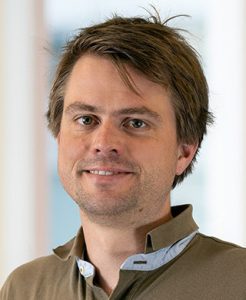Optogenetic
Gastric
Pacemaking
We have pioneered direct optogenetic stimulation of striated and smooth muscle cells, which, unlike electrical prostheses, promises long-term control of muscle function independent of the state of innervating nerves. Gastroparesis is a debilitating disease affecting millions of patients without an adequate treatment option. In most cases, it is caused by dysfunction of the enteric nervous system and interstitial cells of Cajal, while smooth muscle cells generally remain intact. However, treatment by electrical stimulation is only tolerable for patients at low energies, which stimulate afferent nerves but not smooth muscle cells, and thus cannot induce contractions and restore motility. Initial clinical studies reported mild symptom relief in some cases, but never restoration of food propulsion. We have demonstrated that direct optogenetic stimulation of smooth muscle cells induces force development that increases gastric pressure and ultimately food propulsion in the stomachs of transgenic mice expressing ChR2 (https://www.thno.org/v11p5569.htm).
Importantly, expression of ChR2 in one-third of smooth muscle cells was sufficient to generate as much force as potassium depolarization of all cells and produces significantly more force compared to electrical stimulation. Recently, we characterized the human neuropsin receptor (hOPN5) and demonstrated that its optical activation selectively drives Gq protein signaling and consequently induces Ca2+ transients in smooth muscle cells (https://www.nature.com/articles/s41467-022-29265-w). In this project, we will first investigate the different mechanisms and compare the effectiveness of these two completely different and complementary approaches: light-induced membrane depolarization and generation of action potentials with light-induced Gq signaling with the advantage of intracellular signal amplification. Subsequently, we will investigate improved variants of channelrhodopsins including ChReef and OPN5 mutants. The next steps are to find an efficient gene transfer, test the approach in vivo on healthy and gastroparetic animals, and develop medical devices for efficient illumination.


